Unusually it was a clear Friday evening. I did plan to be ready to go as soon at the pole star was visible but my imaging PC insisted on updates and the local hard disk was running at 10MB/s (replacement SSD on the way).
By the time I was ready, mount setup, polar aligned and balanced it was already late. I decided not to use the latest SGPro or NINA beta but just use the existing SGPro version. I was delayed starting as I was having issues with SGPro hanging when it couldn’t talk to the SQM (ASCOM Conditions Observing Hub) on a previous COM port, I need to report this back to the devs as a bug.
At this point Peg-Leg Dave joined me on a video call and we discussed imaging M45 in different modes on the QHY268C OSC. So we moved the scope to Alp Ari and proceeded to plate solve in SGPro, sync’d the scope Cartes Du Ciel and calibrated OpenPHD2.
Using the SGPro framing and mosaic wizard to decide on the framing for the target sequence I wanted as much of the reflection nebula as possible rather than being dead center.
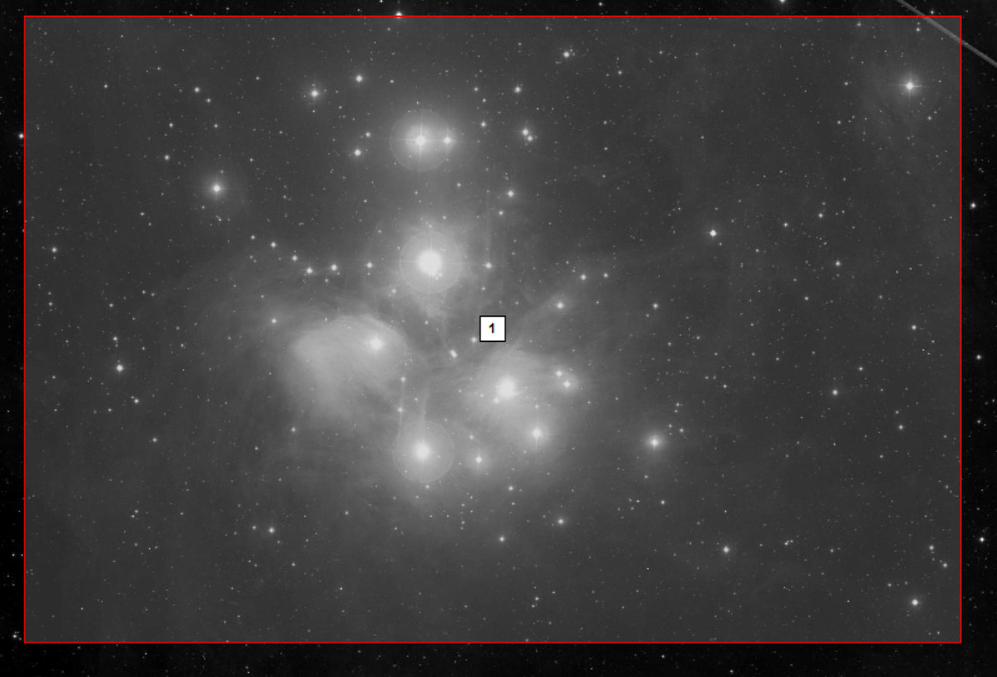
I’ve used the multi-star guiding in OpenPHD2 since it was first released in an earlier beta and I know Dave is looking forward to using it when he moves from using an OAG on his 12-inch RC to a 90mm guide scope to make it easier to get more guide stars or even one star.
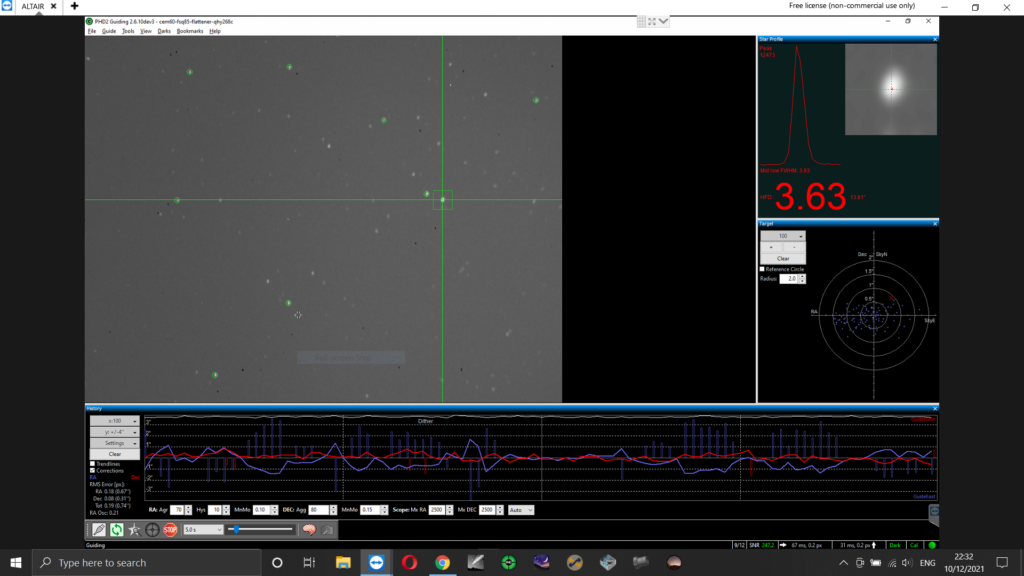
Whilst trying some mode/exposure tests the guiding started acting up in RA, so parking the mount and disengaging the clutches I redid the balance of the scope. It was only marginally off but it was enough to cause issues for the CEM60 …. it is not forgiving !
We decided to increase the Gain/Offset to 15/75 and use the Extended Full-Well mode (#2) of the QHY268C, testing the star brightness levels of various exposure times we opted for 180 seconds as that was under the maximum brightness level.
As I currently have no IP camera outside I like to see the mount position using GSPoint3D as I like to view where it is especially during meridian flips. NINA has this built-in now in the recent version 2.0 betas. As SGPro lacks this functionality I can use the view via this is standalone version that connects to the ASCOM mount.
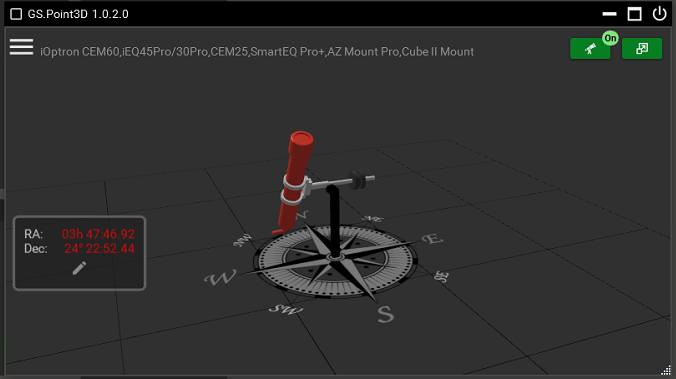
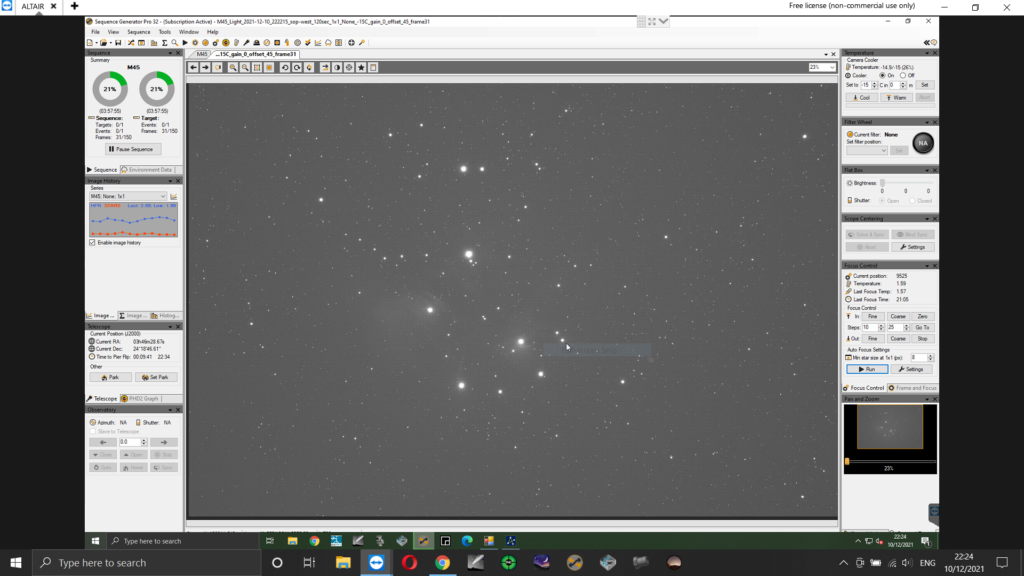
SGPro paused the guiding just prior to the meridian flip. Following the automated flip, the guider and the imaging sequence automatically restarted after a plate solve and auto centering were performed.
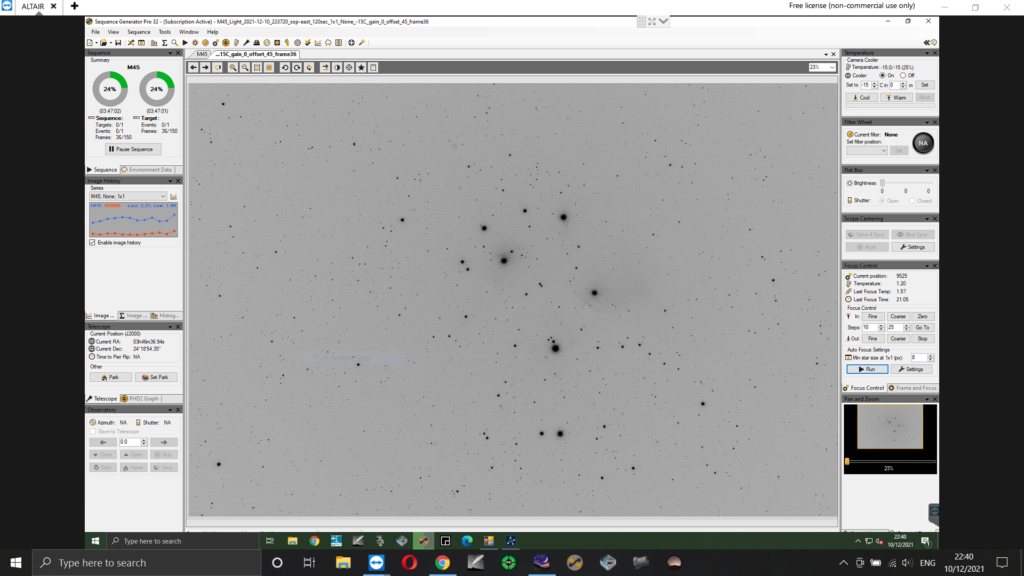
It gradually got cloudier just after midnight and the quality of the subs declined so I decided to stop acquiring data even though we really wanted over 4 hours of exposure.
I proceeded to take calibration frames. Using a target ADU of ~23,000 the SGPro flat wizard on the Pegasus FlatMaster (100%) gave an exposure time of 9.68s for the Optolong L-Pro filter, 25 flat-frames were taken followed by 25 dark-flat frames of the same exposure time and finally 25 dark frames of 180 seconds.
It was at this point that I realised that the FITs header showed a gain level of 0 and not 15, the offset was correct but I can’t be sure if the EFW mode was used as it’s not in the FITs headers. Only when using the native driver in NINA can you set the mode within the sequence, in SGPro the mode is set in the external ASCOM driver when the camera is not active in SGPro even though though it’s in the ASCOM API as the Camera.ReadoutModes property.
Also for some reason the default setting in the QHY driver is to NOT disable the overscan area which means I have black borders on my images which will make processing the data in Pixinsight a challenge !
I actually got to bed after 3am even though I had planned to stay up until the dawn. Next morning I noticed that my counter-weight had slipped and rotated on the bar. This may have also caused some of the issues with the guiding so I need to set-up earlier and check things more thoroughly in future to avoid these mistakes.
So although it’s not the data we planned it will be worth processing over a wine. The evening was a really a useful experiment and hopefully lessons will be learned …. if I remember the next time.
